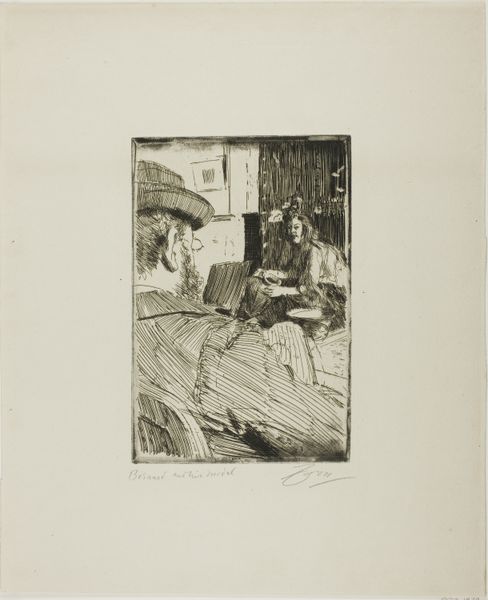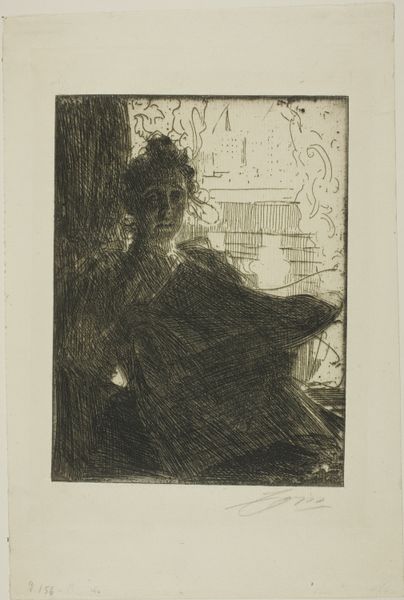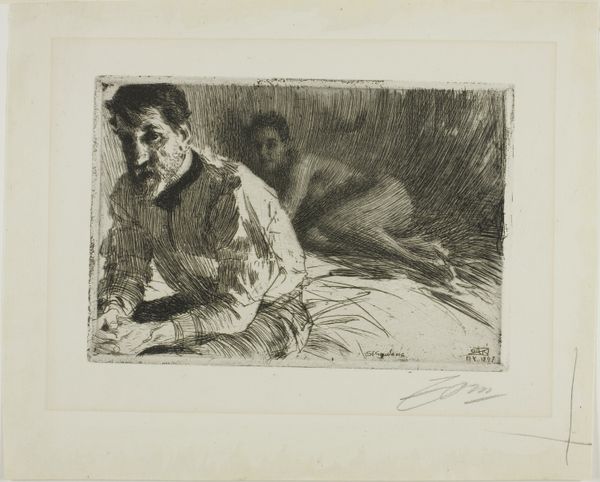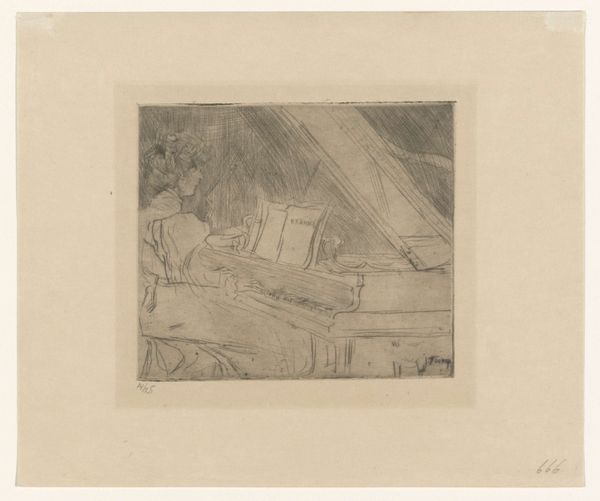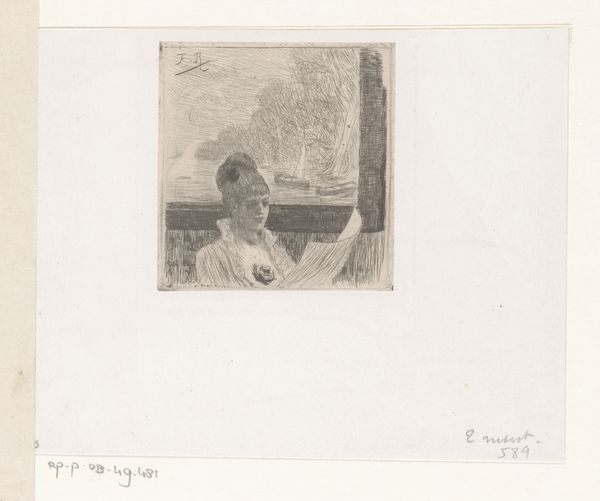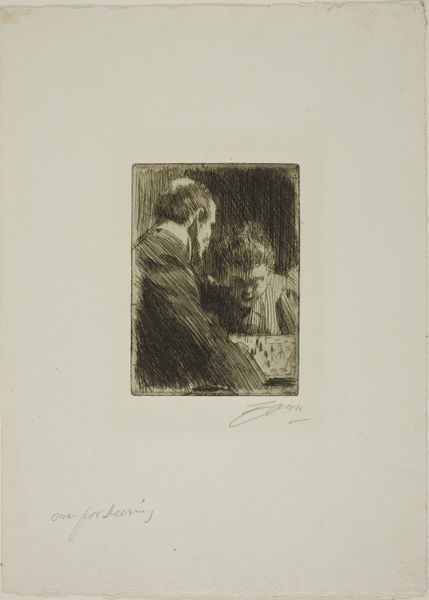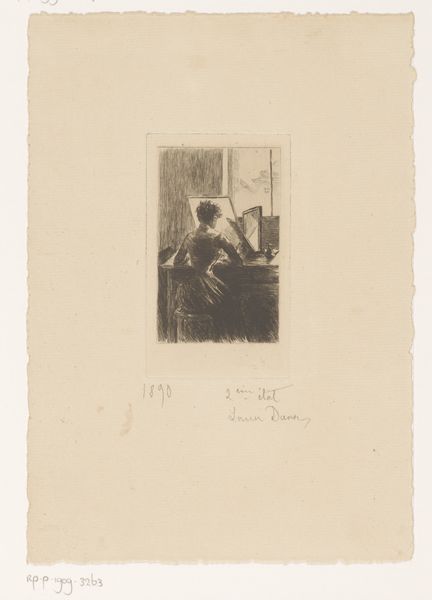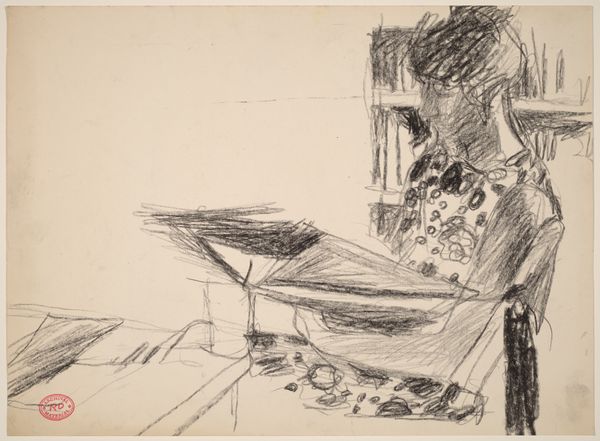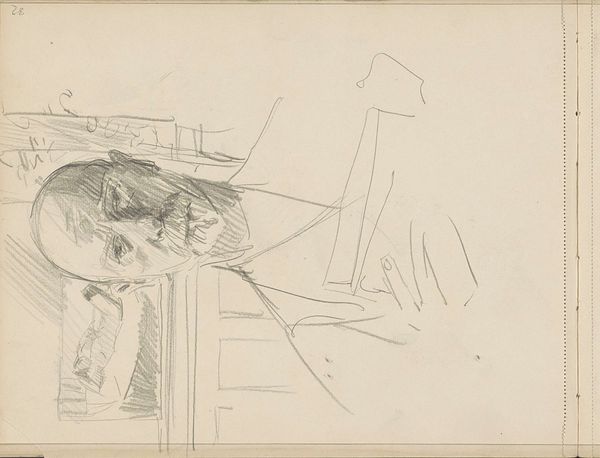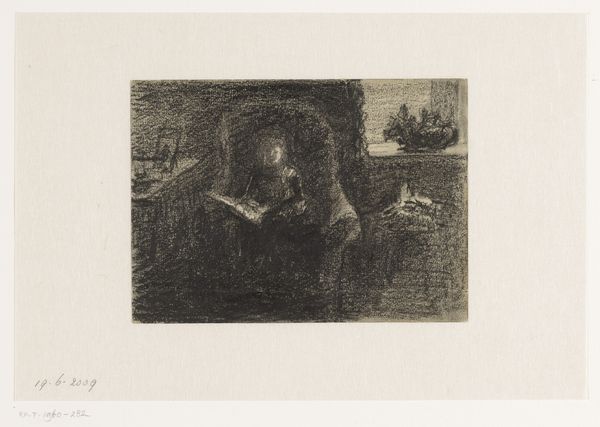
drawing, print, etching, paper
#
portrait
#
drawing
# print
#
impressionism
#
etching
#
paper
#
genre-painting
Dimensions: 100 × 138 mm (image/plate); 252 × 330 mm (sheet)
Copyright: Public Domain
Editor: Here we have Anders Zorn's "Lady Reading (Mrs. Zorn)," an etching from 1890. It's a small print on paper, and it strikes me as a very intimate, domestic scene. What can you tell me about how this work fits into its time period? Curator: That’s a great starting point. Zorn's etchings, including this one, really speak to the rising middle class and their cultural pursuits. Think about it: who could afford the leisure time to read and to be depicted reading? This seemingly simple scene signifies a shift in social structures. How do you think this image was consumed, and by whom? Editor: I imagine that etchings like this were more accessible than large-scale oil paintings, perhaps reaching a wider audience through print culture. Were images like this circulating in magazines or exhibited in public venues? Curator: Precisely! Etchings like this one were reproduced and disseminated, entering the homes of an increasingly literate and cultured public. Consider also the burgeoning art market at the time, with galleries and exhibitions providing platforms for artists like Zorn to gain recognition and financial success. Can you see any visual indicators of this in the image itself? Editor: Well, the lady looks comfortable and relaxed. I think she represents a modern ideal of educated womanhood and domesticity, which I guess makes this image both aspirational and celebratory. Curator: Exactly. The 'genre painting' theme tells us about that era. Zorn is presenting an idealised but also recognizable moment. Consider the influence of photography; it adds a layer of authenticity to it. He uses techniques derived from Impressionism, but with a strong understanding of historical modes of art production, and with his eye on public recognition. Editor: It's fascinating how a seemingly quiet image reveals so much about the social and cultural landscape of the time. I hadn’t thought about print culture in this context before. Curator: Indeed, analyzing such details enables us to understand the context in which these works were created and the purposes they served, helping us connect them with broader socio-political transformations and their influence on society.
Comments
No comments
Be the first to comment and join the conversation on the ultimate creative platform.
